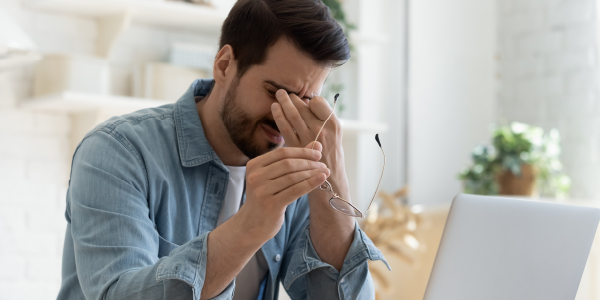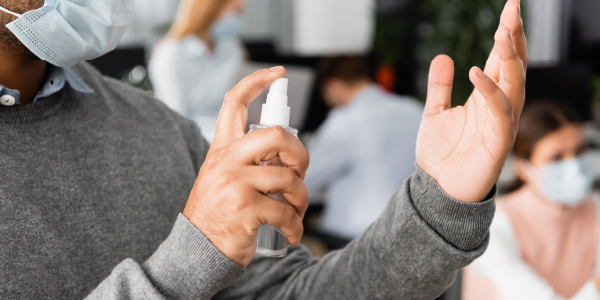Several pandemics have left traumatic scars on humanity throughout history, including the Spanish flu and the Black Death, among others. COVID-19 has certainly left deep scars—one of them, without a doubt, economical. In spring of 2020, we saw many businesses shut down, some temporarily and others permanently, and further witnessed as most of the workforce began to work from home, or worse yet, were laid off. A little over a year later, however, the country is doing it’s best to return to a pre-pandemic way of life.
New job opportunities are arising in the market, employers are becoming better situated towards state and local guidelines, and more people are returning to the workplace. So, whether you are returning to an in-person site for your career or are on the hunt for a new position, the question to be asked is this: how do we go about returning to work after COVID-19? In this guide, we will cover three essential concerns for your return to the workplace.

When Should an Employee Suspected or Confirmed to Have COVID-19 Return to Work?
Since COVID-19 is a virus with major potential health consequences, the primary concern upon returning to your workplace will involve your health and the health of others. There are three health-safety concerns that should be taken into consideration:
- Physical Health
- Mental Health
- Social Health
How Long Should Quarantine Last for COVID-19? And Other Questions Your Workplace Should Be Asking
These three factors will play a major role in the productivity of your work regardless of career and location. With different employers come differences in workplace policies and comfort, especially when taking local and state policies regarding COVID-19 into consideration. Some employers and their human resources department will remain very strict in regards to COVID-19 safety guidelines, while others may allow for a little more leniency. Thus, our first concern in terms of health and safety will primarily involve your physical health:
- Are you fully vaccinated?
- How many of your coworkers have received their COVID vaccination?
- What are their mask policies?
- What social distancing policies do they enforce?
These and other questions related to COVID-19 should be considered prior to your return to the workplace.
Symptoms of COVID-19 to Look for at the Office
After you’ve returned to the office, it is also crucial to be aware of the symptoms of COVID-19 for your own safety and the safety of your coworkers. According to the Center for Disease Control and Prevention (CDC), symptoms to watch for concerning COVID-19 include:
- Fever or chills
- Coughing
- Trouble breathing or shortness of breath
- Lethargy/exhaustion
- Muscle or body aches
- Headache
- New loss of taste or smell
- Sore throat
- Runny nose or congestion
- Nausea or vomiting
- Diarrhea
How Long Can People with COVID-19 Be Infectious For?
Some people will not exhibit the symptoms of COVID-19, but may still be infected with it. If you know that you have been near an infected person, self-isolate for at least ten days and remain cautious until cleared with a negative COVID-19 test from your doctor. However, it should also be noted that the symptoms of this disease are not exclusive to the disease itself, as many other illnesses share its symptoms. Having a general awareness of the symptoms is a vital tool for the protection of the physical health of both yourself and your coworkers because one can better help to control and prevent the spread further.

What Can I Do to Stop the Spread of Coronavirus at Work?
CDC guidance to prevent further spread of COVID-19 includes, but is not limited to:
- Staying home if you have any of these symptoms
- Maintaining social distancing of at least 6 feet, regardless of workplace policy
- Getting the COVID-19 vaccine as soon as it is available to you
- Wearing a mask, especially around others who may exhibit said symptoms
- Utilizing hand sanitizer or washing your hands after touching high-traffic surfaces
Mental Health Challenges of COVID-19 Pandemic
The second health aspect concerning your return to work will involve your mental health. To some degree, you may experience a level of stress and/or anxiety, which may depreciate your mental health, inhibit your productive capabilities, or worse yet, weaken your state of health overall.
Some factors that may lead one into stress, according to the CDC, may include:
- Operating unusual, different, or changed assignments
- Insecurities about the future of your workplace/employment
- Acclimating to a dissimilar workplace schedule and/or routine
- Increased care/concern for the personal needs of family members/self
- Feelings of guilt of not contributing enough to productivity goals
- Insufficient tools, equipment, and time to fully accomplish your work-related tasks
This is why it is recommended to plan ahead for your return to your workplace, to reduce the levels of stress you may encounter as much as possible:
- Plan your traffic route
- Plan to bring a mask
- Plan to bring hand sanitizer if your job does not provide it
- Practice your social distancing
- Observe the most frequently touched surfaces at your workplace
Taking Care of Your Mental Health After the Pandemic
Remember that you do not have to do everything at once. Just like swimming, there are steps one can take to ease back into work. Being prepared ahead of time can and will make a difference in your mental health. Here are certain stressor symptoms to look out for:
- Anger
- Anxiety
- Insomnia
- Lack of motivation
- Lack of concentration
- Depression/sadness
- State of denial
- Feeling of irritation
If you are feeling any of these symptoms of stress upon returning to the workplace, you should set aside some time to rest and relax before you plan to return to the office. Mental health means caring for your mind, so get involved in some hobbies that you like. Here is a list of things you can do to manage stress levels:
- Strength training and cardiovascular exercises
- Sufficient sleep and rest
- Cooking/bringing your favorite meal to work
- Taking adequate breaks from your task at work
- Stretching out your body
- Walking around for a few minutes
- Spending some time outside
When Can I Be Around Others After Recovering from COVID-19?
The final aspect of health safety upon your return to your work will involve your social health. Take some time to talk and listen with friends, family members, and coworkers. Whether in-person or via technology, talking helps to establish meaningful connections with others and decreases the sense of loneliness within one. This will help build your confidence for both yourself and for your return to work.

Returning Safely to Work After COVID-19
Research conducted by the American Psychological Association indicates that there are productivity costs associated with working remotely. A lack of communication with your leaders/coworkers can lead to frustration. There are also tempting distractions one can face while at home, such as entertainment, personal concerns, and news about the coronavirus pandemic. Finally, the feeling of loneliness can settle in on you and inhibit your mental health, weakening your overall mental state and productivity.
In closing, the three major factors upon your return to the workplace after COVID-19 will primarily concern your physical health, mental health, and social health. Be sure to be on the watch for symptoms of COVID-19. You should also watch for symptoms of stress in yourself and your coworkers and have a plan to make this transition smooth for yourself and your coworkers. Returning to work after COVID-19 will become easier as time goes by and more people are able to schedule appointments for the COVID-19 vaccine.
The post Tips for Safely Returning to Work After COVID-19 appeared first on OakBend Medical Center.
------------------------------------
By: OakBend Admin
Title: Tips for Safely Returning to Work After COVID-19
Sourced From: www.oakbendmedcenter.org/2021/06/24/returning-to-work-after-covid-19/
Published Date: Thu, 24 Jun 2021 14:08:50 +0000






